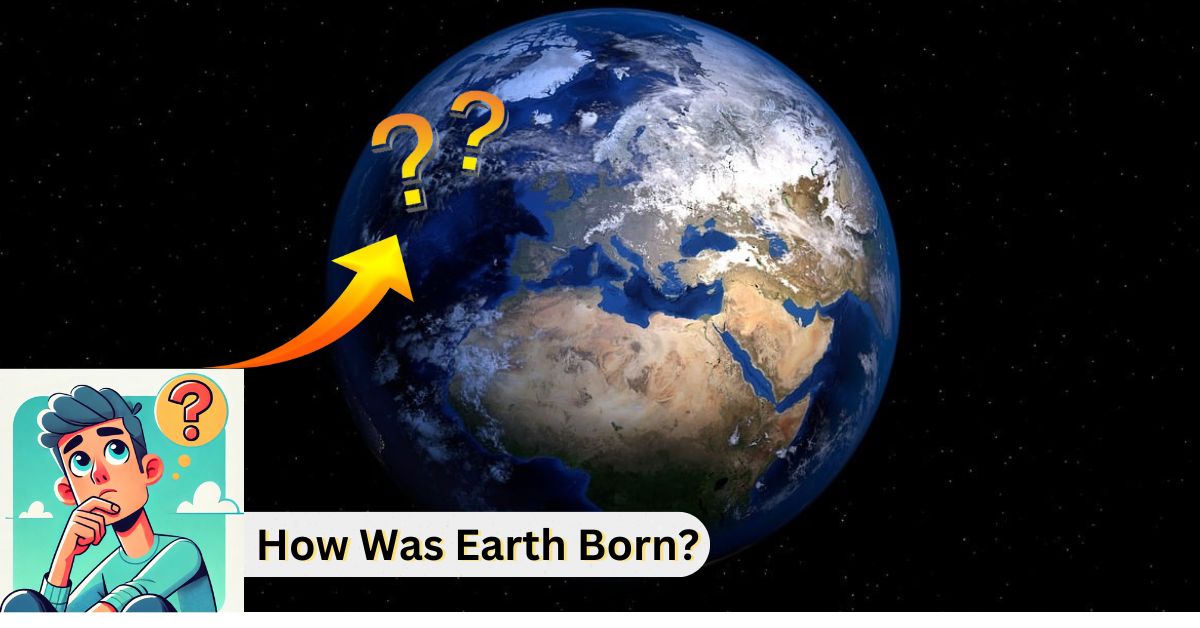Introduction: How Was Earth Born Earth, our home, is a planet full of life and wonders, but its origins trace back to a time long before humans existed. Around 4.5 billion years ago, Earth was formed from a swirling cloud of gas and dust left over from the birth of the Sun. This chaotic beginning, shaped by cosmic collisions and intense heat, eventually led to the development of a stable planet capable of supporting life.
But how exactly did this happen? What forces played a role in shaping Earth as we know it today? In this blog, we will explore the fascinating journey of Earth’s formation—from a cloud of space dust to the vibrant, life–sustaining world we call home.
History Of Earth: How Was Earth Born
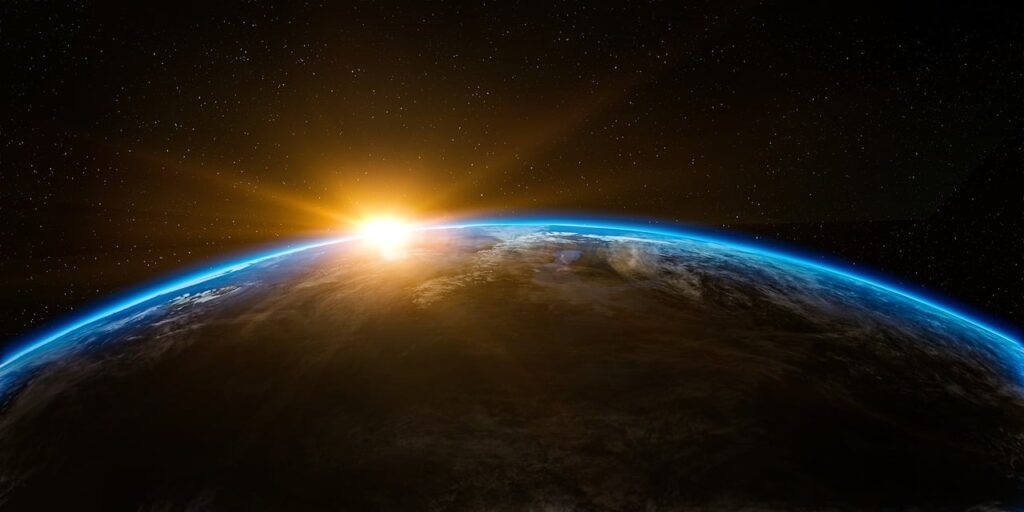
The birth of earth. How Was Earth Born
How Was Earth Born? About 4.6 billion years ago, that is 4,600,000,000 years ago, our solar system did not exist. Instead, there was only darkness. Deep, deep, quiet, and empty space. In this space was a cloud full of dust and gas. This cloud is known as the solar nebula. It contains various gases. Most of them are hydrogen and helium. This cloud was peacefully traveling through the darkness of space for millions of years, and then, suddenly, one day, there was a big explosion. And no, I don’t mean the big bang. I am talking about the supernova.
This explosion wasn’t caused inside the cloud, it took place somewhere close to it. A dying star exploded near it. This kind of explosion is called a supernova, and it happens to those stars that reach the end of their life. The shock waves of this explosion reached our solar nebula and caused gravitational instability. In some areas of this cloud, the gas and dust begin compressing. Gradually, this entire nebula starts collapsing inward, and the gas and dust start revolving around it. The nebula looked like a rotating disk at this point. This flat, rotating disk is called a protoplanetary disk. Proto means before. The disk that existed before the planets were formed. Since this disk was flat, this helps us understand why our solar system is flat. Now, at the Centre of this protoplanetary disk, the pressure and temperature kept on increasing, and it gave birth to a proto-star. Proto-star means the same thing: the thing that existed before the star was formed. Gradually, the contents of the nebula were pulled towards the Centre due to increasing temperature and pressure. At 1 point in time, the Centre became so concentrated that nuclear fusion reaction started. Hydrogen fusion reaction. It takes place at around 50 million degrees Celsius. In this reaction, hydrogen turns into helium. Because of this fusion reaction, our son was born.
This reaction is still taking place on the sun, and is the source of sunshine, heat, and light on earth. Back then, 4.6 billion years ago, most of the gas and dust in our solar nebula was converging into the sun. This is why even today, the sun makes up about 99.8% of the total mass of the solar system. And the remaining 0.2% didn’t go unused. That 0.2% accounts for 8 planets, hundreds of moons, thousands of comets, and millions of asteroids in our solar system.
How Did These Planets Start Forming? How Was Earth Born
How Was Earth Born That’s so interesting. Small dust particles in the rotating Proto-planetary disk started colliding with and sticking to each other. This happened due to static or chemical bonding forces, and initially, they formed into small clusters. Millions of years later, the clusters started getting bigger when more dust particles collided with them. Gradually, some of them got so big that their diameter ranged from 1000 m to a few kilometers. These bodies are called Planetesimals. A tiny version of planets.
When gravity pulled these Planetesimals together, their mass or size became as big as our moon, and they were called proto-planets. The process of these dust particles accumulating together is known as accretion. This means “the coming together and cohesion of matter under the influence of gravitation to form larger bodies”. The accumulation of materials leads to the formation of larger bodies.
Today, scientists have observed this process of accretion all over the universe through powerful telescopes. Astronomers have seen this happening in another solar nebula where dust particles accumulate quickly, and in just a few thousand years, they scale up to around 1 cm. Since this was observed in different stages, scientists can now confidently say that for millions of years, these small particles kept on growing and eventually became planets. By collecting data from these measurements, scientists can come up with simulations of the collisions of dust and Planetesimals. And this simulations help us estimate that it would have taken tens of millions of years for the proto-planets to form.
About Our Earth: How Was Earth Born
How Was Earth Born These small proto-planets and Planetesimals collide with each other. These weren’t small bumps. They produced a lot of energy. These generated so much heat that they melted rocks. Giving rise to seas of Lava. As these proto-planets collided with each other, they became bigger because of gravity, and over time, they started becoming round in shape. And after numerous such collisions, our earth was born.
During this period of constant collisions, small proto-planets or Planetesimals would collide with our Earth. This period is known as the Hadean Eon.
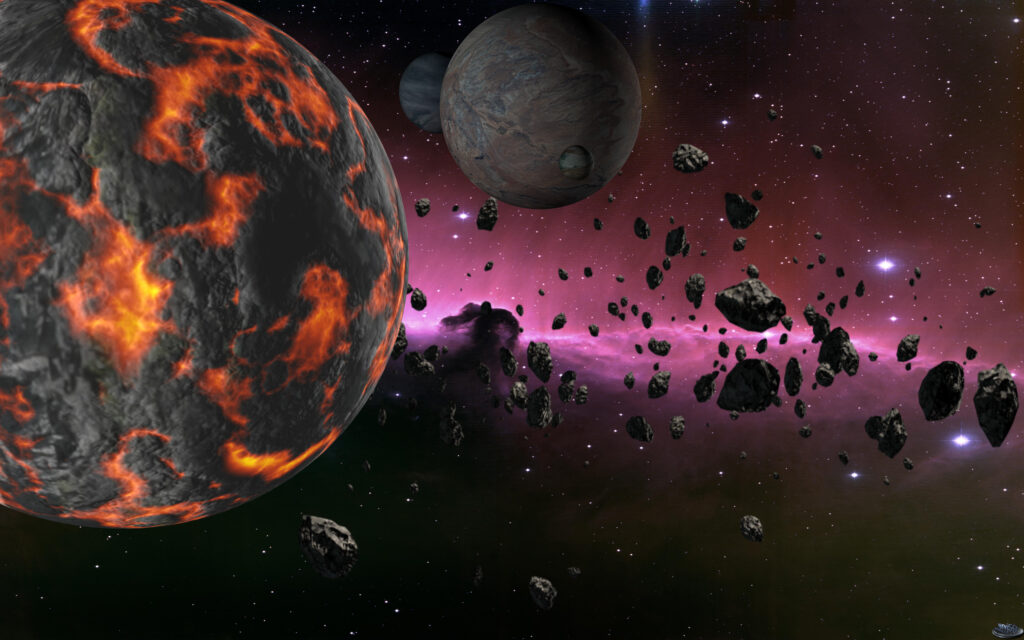
This was the time between 4.6 billion years ago and 4 billion years ago. Some objects that collided with the earth during this period were as big as 100 or even 200 km in diameter. Some comets and asteroids that collided with Earth contained high concentrations of water in them. You might ask how those asteroids and comets got water. That was because of the solar nebula. The cloud of dust eye mentioned earlier in the blog contained crystals, too. Even our earth had some water. When the minerals trapped inside the microscopic crystals from the Eon period were analyzed, it was discovered that liquid water was present on the earth as well. But the increasing water reserves on Earth were caused by the colliding asteroids and comets. Simultaneously, there was another process underway. During these collisions with the earth, the water would become steam and go into the air. And after some time, it would come down as rain. By the end of this Hadean Eon, our earth had become a homogeneous ball. There was magma all the earth had become almost like a uniform layer of Lava.
Today, we know about Earth’s three main layers—the crust, mantle, and core. By the end of the Hadean Eon, Earth’s crust had already started to form. Earth’s separation of these three layers happened during the next period.
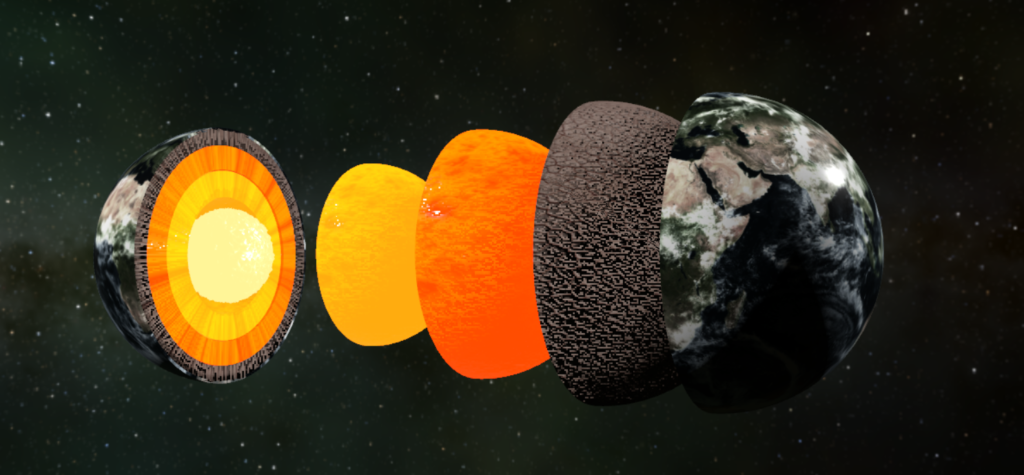
The Archean Eon: How Was Earth Born
The word Archean comes from the Greek word Arkhe, which means beginning. So, from this period, Earth began to take shape. This period lasted from 4 billion years ago to 2.5 billion years ago. During this period, the ball of Lava was our Earth. There were different elements in it. The heavy elements like iron and nickel, because they were denser than the other elements, gradually started flowing into the magma and started accumulating at its Centre. Just like how water makes its way through the sand. The simple reason behind this was the post of gravitation.
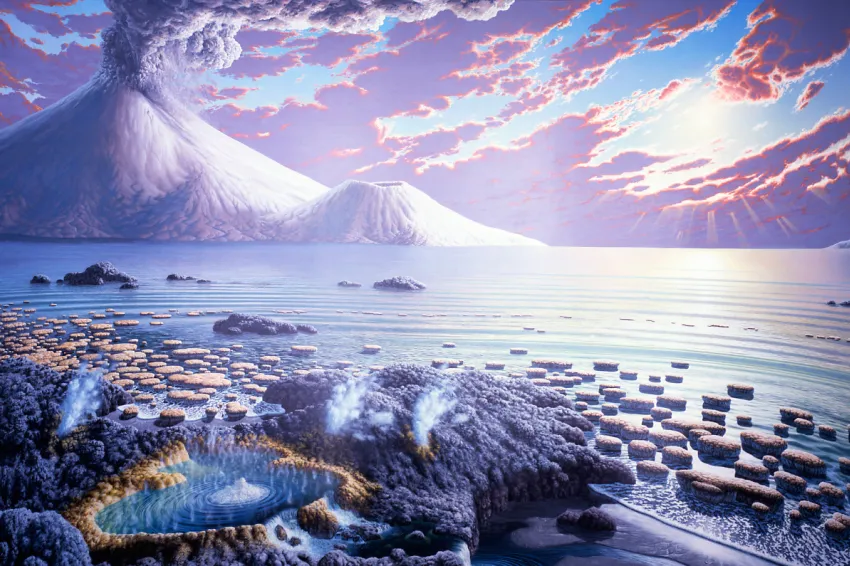
The heavier elements iron and nickel kept being pulled towards the Centre. And the lighter elements started flowing upward towards the surface. Like silicon, oxygen, aluminum, sodium, calcium, and potassium. The Centre is the surface kept speeding up with time, and slowly, at the Centre of the earth, the core began to take shape when the iron and nickel started fusing. We know that Earth’s core is its hottest component. The temperature reaches up to 6000 degrees Celsius. The reason behind this high temperature is not only the high pressure and gravitational force. Another reason is the constant radioactive decay in the mantle layer. Elements like Uranium, thorium, and potassium lie in the mantle layer they are undergoing constant radioactive decay; this is a major source of heat for Earth. The mantle layer is the thickest, it is more than 3000 km thick. Today, this layer is solid. But back then, this layer was not solid. It was full of magma. When the lighter elements were blowing upwards, they cooled at the surface and showed the topmost layer. The crust was formed. Oxygen was the most abundant element in this crust. 46% of the crust mass was made up of oxygen.
If you study geology in detail, you will find that the Earth is differentiated into not three but five layers based on their physical properties. These layers are the lithosphere, asthenosphere, mesospheric mantle, outer core, and inner core. The lithosphere is the topmost layer. It is divided into two parts. Oceanic and continental. The crust under the oceans and the crust under the continents. They are significantly different. The crust under the oceans is quite thin. There, the average thickness is around 100 KM. But the crust under the continents can be up to 280 km thick. Here, we come to the tectonic plates. Because this isn’t a continuous layer. It is made up of many parts. The areas where the boundaries of these plates meet give rise to volcanoes. When they rub against each other, it causes earthquakes.
The layer under it, the asthenosphere, isn’t rigid. It acts like a lubricant. The word Astheno means weak in Greek. This layer, unlike the lithosphere, is continuous. It doesn’t have parts or pieces. And its average thickness is about 140 km. Below this, in the outer parts of the lower mantle, you can see a transition zone. Where the rocks become denser. Some examples of such rocks are olivine, peridotite, and ringwoodite, these high-pressure minerals from inside the mantle, and you can see they look beautiful. Now, if these minerals are found inside the mantle, how did we take them out of the mantle and see them? We did not take them out. Nature, our Earth, brings them out. At times when there are volcanic eruptions, the Magma that erupts from the volcano brings with it these high-pressure minerals from the mantle.How Was Earth Born
Moving inwards, in the outer core layer, iron keeps on churning due to the heat, this generates electrical currents. Since iron is a good conductor of electricity. These electric currents then form a magnetic field. This magnetic field is one of the primary reasons why Earth can sustain life. It is the magnetic field that protects against the harmful charged particles emitted by the sun. It protects us against solar winds and helps hold the atmosphere together.
And this is how our planet earth was born.
Also Read :
Apollo Mission: Why We Haven’t Gone Back To The Moon? Why did we stop going to the moon?
